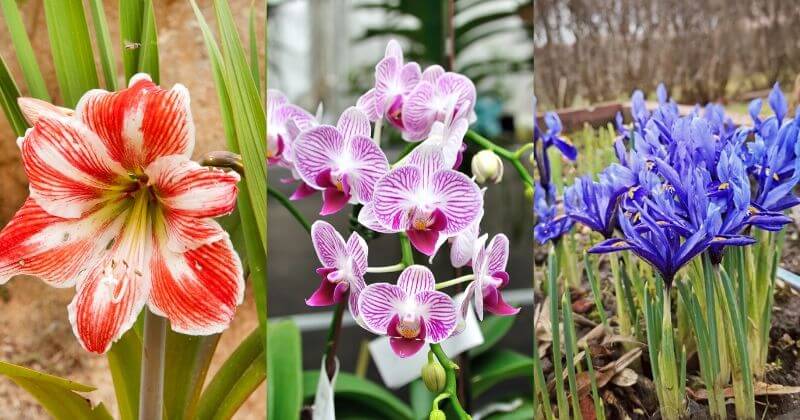
Do you want to grow flowers but you don’t have land to grow them? Would you believe me if I told you that there is not just a solution, but a way of growing them faster than if you grow them in your garden? You will have to believe it, because hydroponic gardening gives faster and higher yields than soil gardening. And that includes flowers as well.
In fact, when you go to buy a bunch of flowers from your local florist, the chances are that some of them have been grown without soil and hydroponically. With the average yield between 2 and 5 times higher than soil gardening, experts forecast that hydroponics will grow very fast.
But if you think that this technique is only for expert professionals, you are mistaken. You can easily grow many flowers even with a small hydroponic garden the size of a shoe box. What’s more, ready-made kits are available at very affordable prices indeed.
The question is, however, which flowers are more suitable for hydroponic gardening? While most flowers can be grown with a hydroponic system, some are better, and here are 10 best flowers to grow hydroponically.
1. Orchids

Who can resist the exotic, elegant and original beauty of this wonderful flower? With between 20,000 and 30,000 species to choose from, orchids offer a whole world of amazing shapes and colors to turn every home or office into a special place.
These flowers spell “beauty” in a unique way and, you will be pleased to know, many are naturally suited to hydroponic gardening.
“Why is it so,” you may wonder? The reason is that many orchids are epiphytes, which means that they grow their roots in the air and not in the ground. They also like high levels of humidity, and their root system is absorbs nutrients directly from the atmosphere.
In fact, many people are now transferring their orchids from soil to hydroponics. As long as you can offer steady conditions of warmth and humidity, these plants are perfectly suited to aeroponics as well, a branch of hydroponics where the nutrient solution is sprayed onto the roots of your plants.
Tips For Growing Orchids
2. Amaryllis
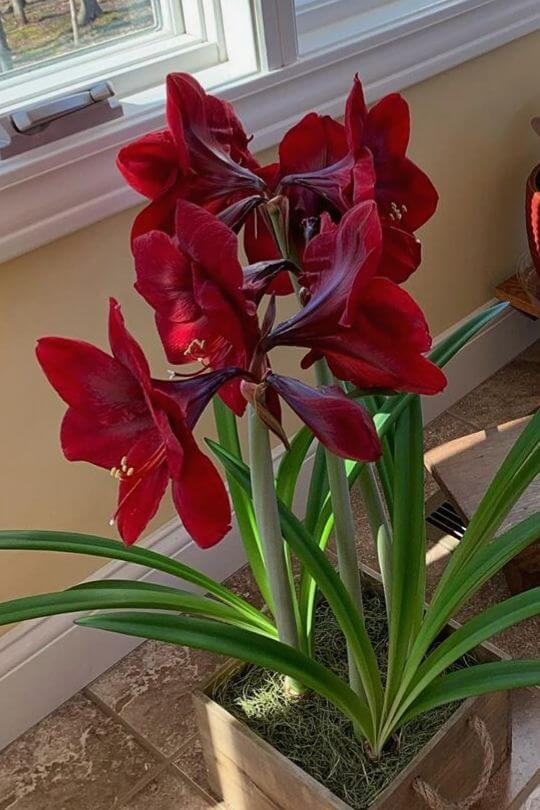
If you love massive flowers that can become the focus of all your guests’ attention during the cold season, then amaryllis is perfect for you.
Mainly grown as a houseplant in temperate regions, this flower that comes in many varieties and cultivars feels at home with its “toes in the water”.
It is even better to use hydroponics to get the big and round bulbs of these plants too root even if you want to plant them in soil later on.
In fact, and there is no reason why you could not keep growing it till its huge blooms shine like star in your living room.
Amaryllis will adapt well even to a rudimental Kratcky method, which is when you put a plant in a jar with its roots in the water and from the base of the stem up it is dry.
A simple deep water culture system will do too. In fact you can plant the bulb in the growing medium (like coconut coir or expanded clay) in a small inner mesh pot and add water and nutrients to an outer and deeper pot will do.
This means that even if you do not have a state of the art hydroponic system, you can easily grow this gorgeous flower.
Tips For Growing Amaryllis
3. Iris

Iris, with its distinctive inflorescence usually with three flowers, is one of the most adaptable plants you will ever know. You will find some species growing in tough clay soil, in boggy swamps and even directly inside water ponds.
From there, the step to hydroponics is short. Some species are more naturally inclined to grow in water, like Iris variegata, Iris tectorum or Iris versicolor, as well as cultivars like ‘John Wood’, ‘Between the Lines’ or the fairly recently developed and beautifully named –and colored – ‘Sun Moon Lake’.
Irises are very special flowers indeed; they have been cultivated for millennia, the Egyptians already grew it in their gardens, so did Ancient Indian cultures.
The flowers too are quite distinctive, and they even have specialized names for the different petals. So, the three petals that turn upwards are called “standards”.
The one that looks like a tongue in the middle is not a petal, but a sepal and it is called a “fall”. This sometimes has hairs on it, known as “the beard”.
Tips For Growing Iris
4. Daffodils

In many countries, daffodils are synonymous with spring. Celebrated in the eponymous poem by the Romantic poet William Wordsworth, when we see these flowers “tossing their heads in sprightly dance,” it is as if the Sun had sent harbingers to announce the warm season… and we cannot but smile with them.
These flowers can be found in meadows in Europe, North Africa and Asia, but they are native of the Mediterranean Basin.
Even a child will recognize them from the corona, that modified central petal that looks like a crown, which sometimes is of different color from the other six tepals and their unique scent.
Narcissus, as this flower is known to scientists, has been a favorite hydroponic plant, as you can easily grow it even with a basic Kratky method thanks to its short vegetative span, and because, let’s be honest, it looks stunning in a small and elegant vase or even in a humble jug.
Tips For Growing Daffodils
5. Freesia
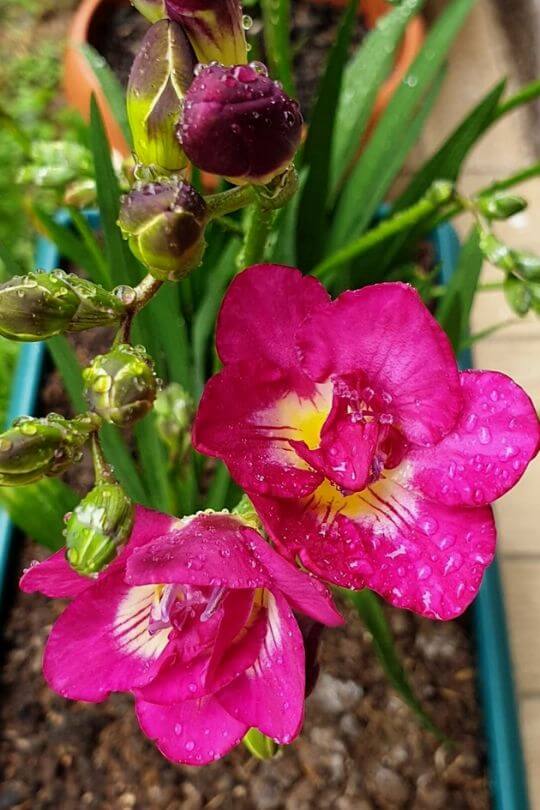
One of the flowers with the most beautiful and distinctive sweet smell of all, freesia is another bulbous flower that can easily grow in your hydroponic garden. If you want to bring a touch of spring joy, its flowers can be white, yellow, purple, orange and red.
Walking into a room with freesias, you are immediately caught by their strong scent, then your eyes are drawn to the very elegant inflorescences and long, linear leaves.
The classy elegance of this plant can transform a well kept, tidy room into an artistic stage set, especially if you set it against a neutral background.
Tips For Growing Freesias
6. Chrysanthemums

If you are from a western country, you will associate chrysanthemums to death. On the other hand, they are the national flower of Japan. So, who’s right? I would say the Japanese…
The sad connotation they have in western countries is only due to the fact that they blossom around All Souls Day, so florists filled stalls outside churchyards and cemeteries with them.
In reality, in flower language, this very generous and easy-to-grow close relative of daisies symbolizes joy, happiness, love and, (hear, hear!) longevity.
Tips For Growing Chrysanthemums
7. Gerbera
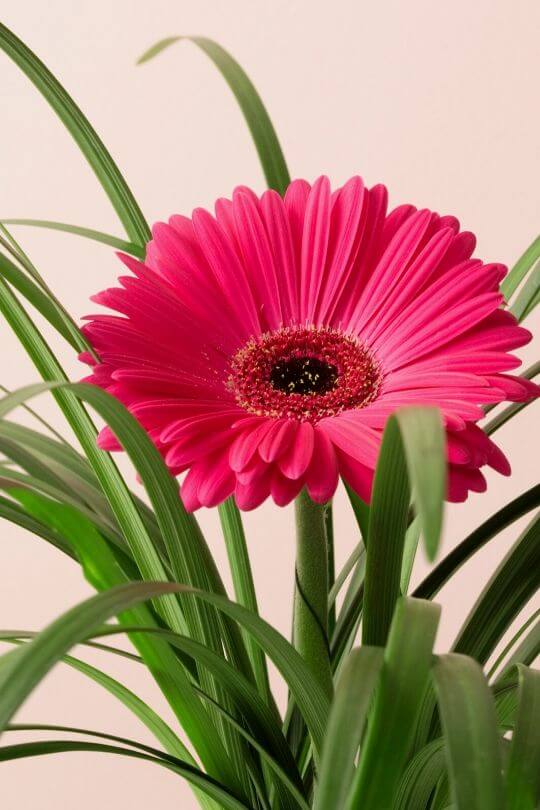
While many people may prefer annuals or bulbous plants for their hydroponic garden, when their blooms are long, even perennials can be very appealing. And the flowers of gerbera, a member of the Asteraceae family that look a bit like rather exotic daisies, last for weeks.
This plant from tropical areas all over the world gives you a stunning choice of colors, ranging from white to dark purple through yellow, pink, orange and red. You can also find flowers of two colours if you like contrast.
This too is a generous flowering plant that likes water, and it has found hydroponic gardens ideal as places to call home.
Tips For Growing Gerbera
8. Carnations
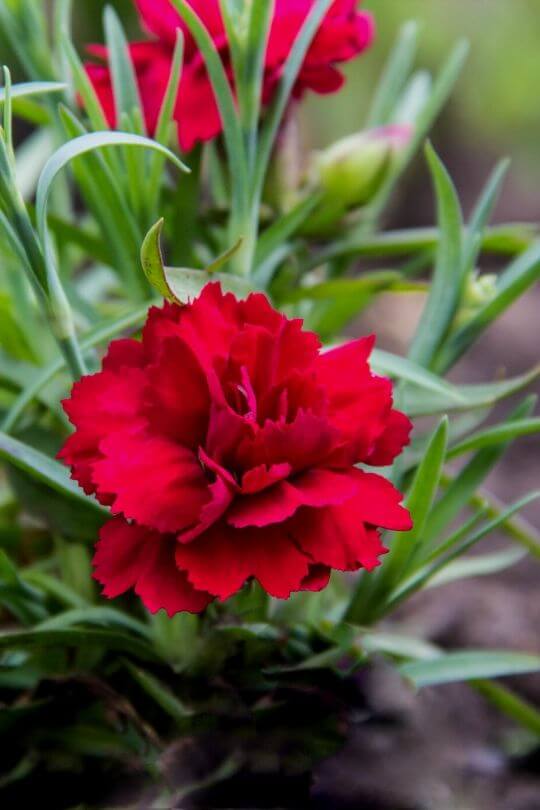
Following the trail left by sweet scented flowers in this article, we find one that is the epitome of beautiful and strong perfumes: carnation. These plants have some of the longest blossoms of cut flowers and they are very suitable for an indoor hydroponic garden.
There are many varieties and species of carnations, known as “divine flowers” to the Ancient Greeks, the “gillyflower” as it was once called, is a fragrant presence all over cottage gardens, where “old fashioned pinks” have been witnesses of love stories since the times of Anne Boleyn and Henry VIII.
But there is no reason why you cannot grow it hydroponically in at home.
Tips For Growing Carnations
9. Peace Lily
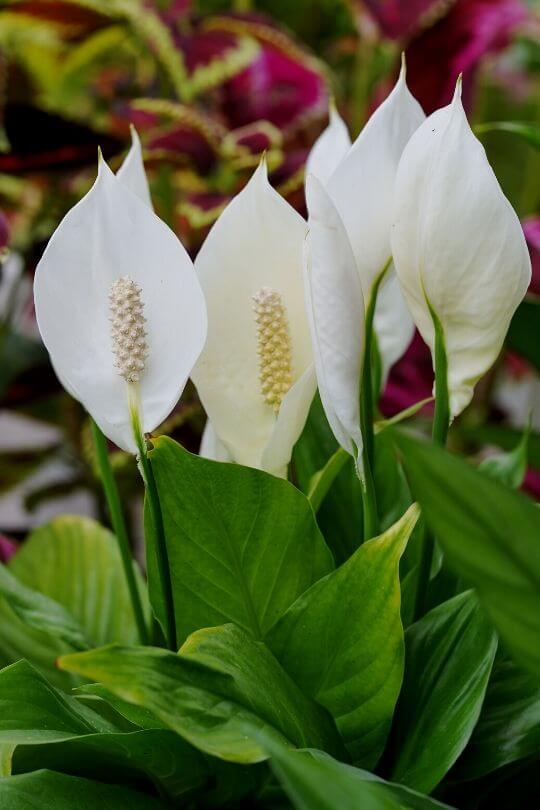
If you just want a beautiful house plant to grow hydroponically, then an all time favorite Spathiphyllum.
This exotic plant takes its name from that modified leaf, usually white but sometimes red, called a “spathe”, which makes a wonderful backdrop to the “spadix”, a long inflorescence that rises like a candle from its middle.
Its leaves too have a great decorative and architectural value. You must agree that they match the flowers with their deep green and waxy, beautifully veined and rich dark green chordate shaped leaves.
If you have a white collar job you will know that peace lilies can turn even the most boring office space into an exotic and interesting place.
Hydroponic peace lilies are becoming very popular indeed, maybe because a well defined ornamental glass container can really bring their beauty to another level.
Tips For Growing Peace Lilies
10. Hyacinth
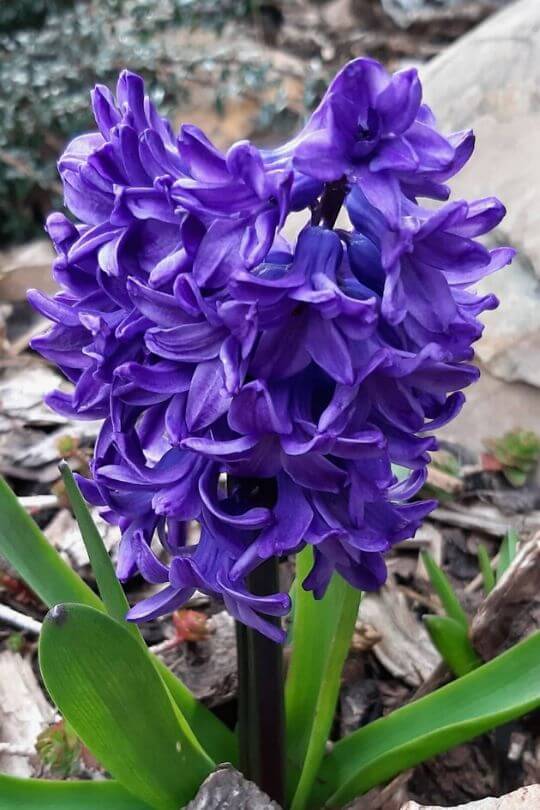
An easy plant to grow hydroponically, so much so that doing it can be an excuse for some quality time with your children and –why not – a chance to teach them about nature and flowers, hyacinths will have as sweet a fragrance if you grow them hydroponically as if they were in your garden.
Maybe the advantage of using hydroponics for this flower is that you will not need to take the bulb out of the soil when the dormant phase starts. In fact, in most temperate countries, the bulbs of hyacinths will not stand the cold season in the ground.
Their short but intense vegetative phase makes them ideal for a simple hydroponic method like the Kratky one; a simple quarter liter wine jug will be perfectly fine for them.
Tips For Growing Hyacinths
A World Of Flowers In Little Water
Now, look at that corner of your home that looks so sad and empty… can you see it blossoming with flowers of all shapes, colors and sizes? Or maybe you came here because you want a big, maybe even professional flower garden…
Well, if that’s your case, don’t worry about how much water you will need: hydroponics use less water than soil gardening – 90% less in fact!
In any case, you can paint your home, terrace, garden or greenhouse with all the colours of the rainbow growing flowers hydroponically, just add your personal touch, your favorite colors and you can turn that white (or gray…) canvass into a masterpiece to match Monet’s Water-Lily Pond.

Written By
Adriano Bulla
After many years as an academic in London, Adriano Bulla became a writer, publishing books like A History of Gardening, Organic Gardening and Elements of Garden Design; he then decided to become a gardener, following his childhood dream, and has been following his dream writing and gardening professionally in Southern Europe, where he has specialized in new and innovative organic gardening fields and techniques, like permaculture, regenerative agriculture, food forests and hydroponics.

Can I get nutrient recipe for this.